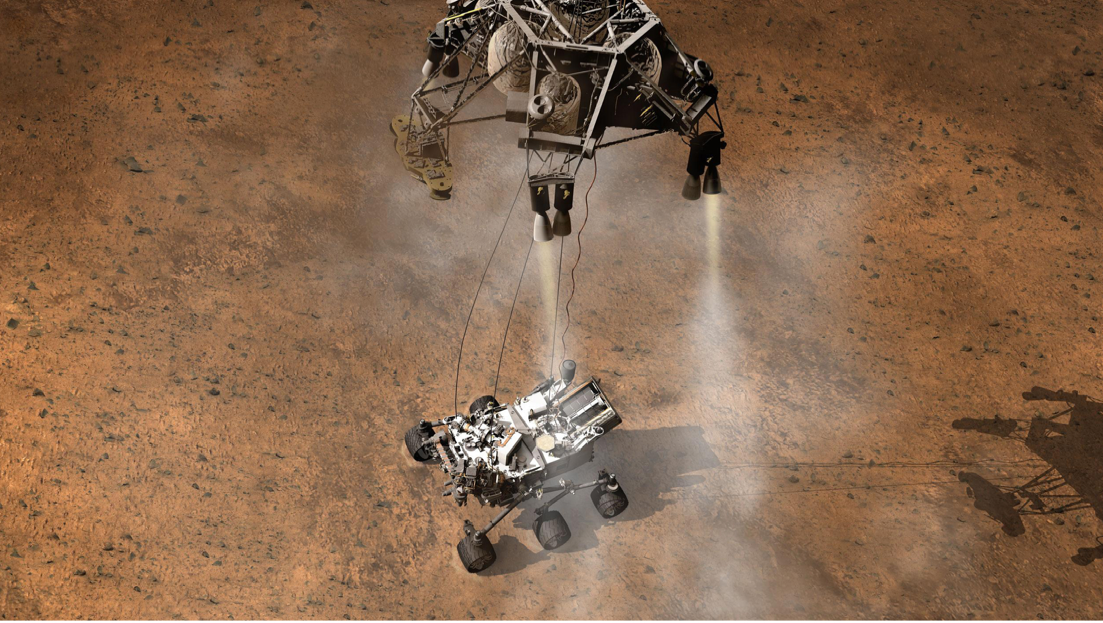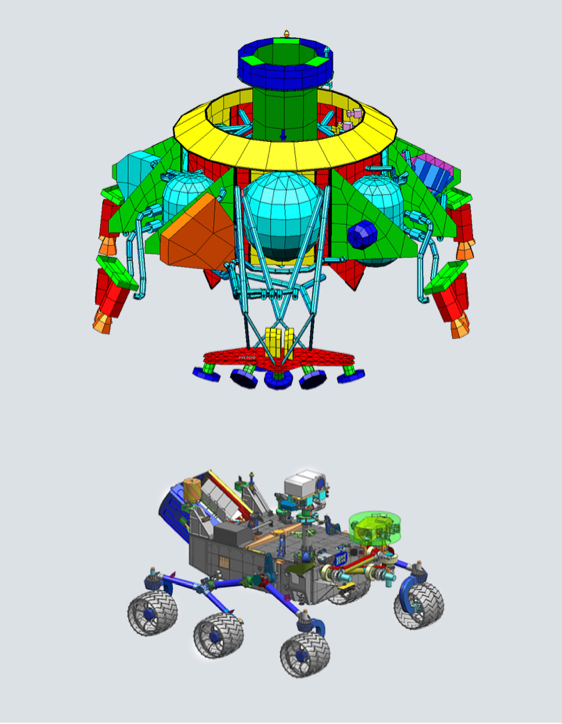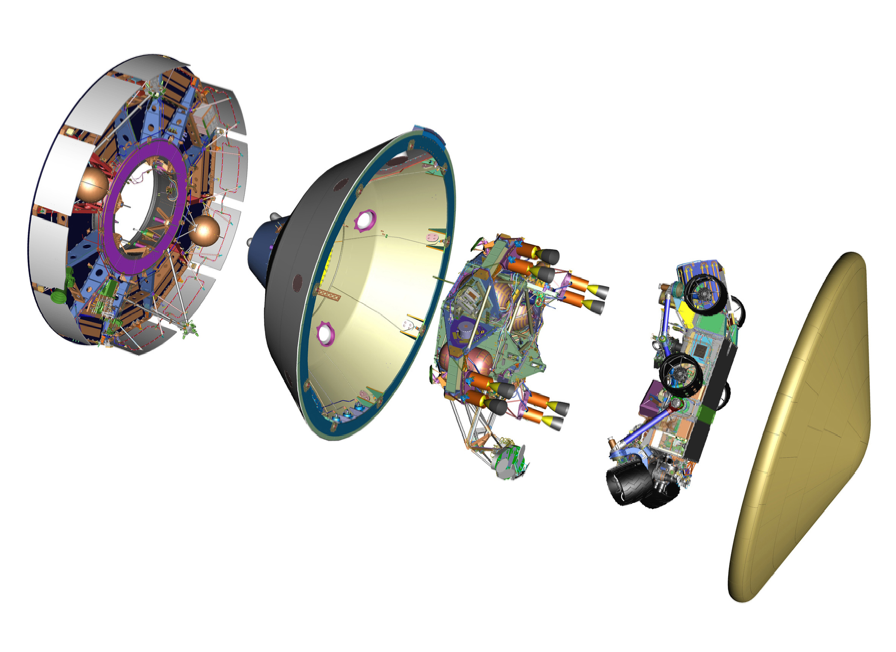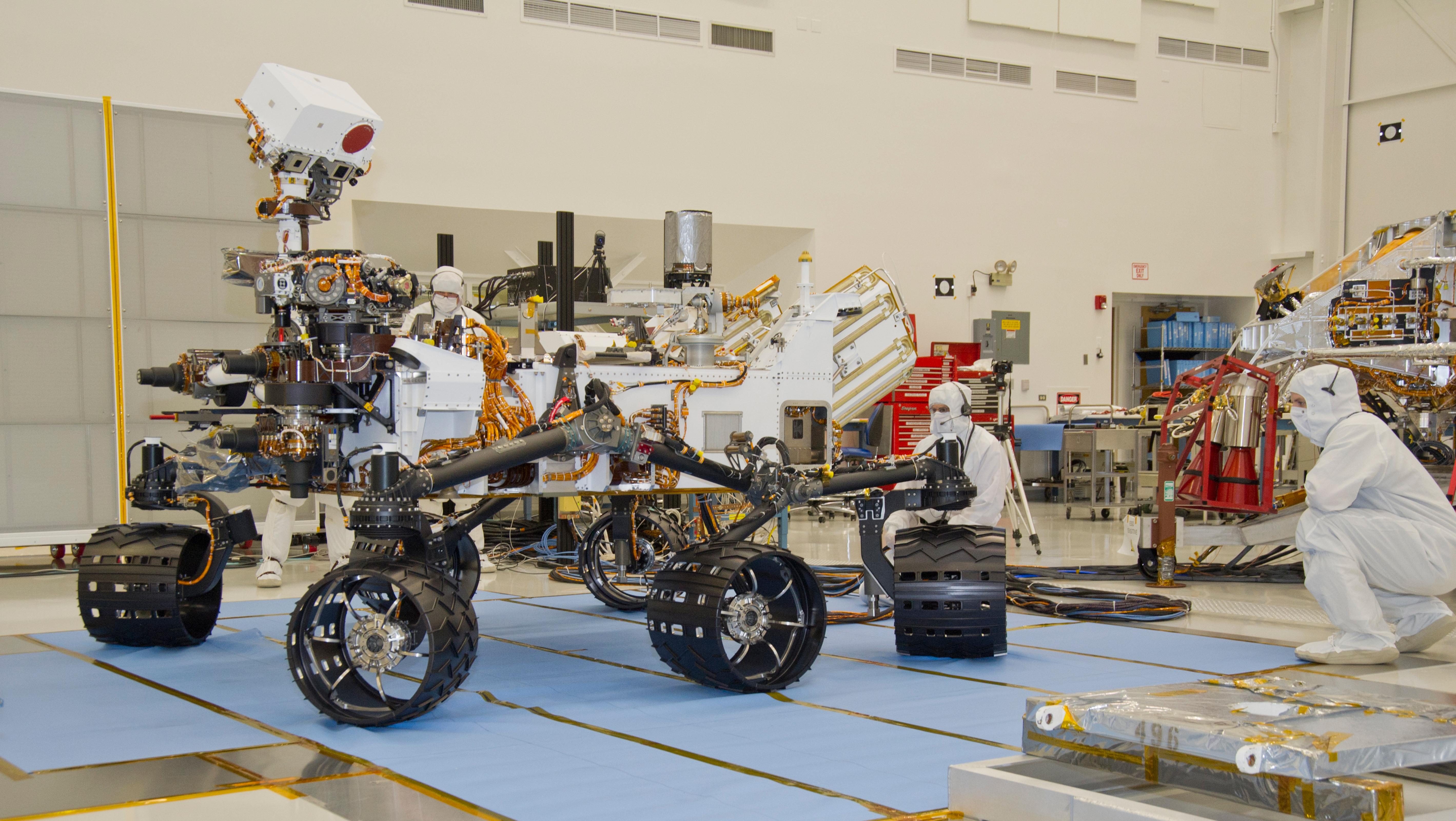Early last month, after an epic 8½ month voyage through the inner Solar System, NASA’s Curiosity rover touched down on the surface of Mars.
Described by the space agency’s leadership as the most challenging robotic mission in its history, Curiosity’s journey to the red planet was a dramatic illustration of one of the great truisms of space travel: the success or failure of years of engineering effort frequently boils down to a breathless few minutes as the landing site comes into view.
In a critical period dubbed “seven minutes of terror” by the engineers at NASA’s Jet Propulsion Laboratory (JPL), the probe carrying the rover left the freezing temperatures of deep-space and began a dramatic deceleration to the planet’s surface that tested the onboard engineering systems to the limit. Incredibly, Curiosity touched down at the precise moment and in the exact spot pinpointed by the project’s engineering team years before. The SUV-sized rover, the largest vehicle of its kind ever to land on another planet, has now begun its quest to discover whether Mars might have once supported life.

As with all big space missions, touchdown was greeted by much whooping and high-fiving back at mission control. But despite a palpable sense of relief, there was little surprise that the landing had gone so well. Indeed, thanks to a design process that had taken attention to detail and simulation to a whole new level, the JPL team had an exceptionally high level of confidence in their technology.
This confidence was thanks in no-small part to the use of a fully integrated suite of engineering software that was used by the entire Mars Science Laboratory (MSL) team throughout the design, test and development process. Supplied by Siemens, the software has 2 key components: the company’s NX suite, which was used for design and simulation; and Teamcenter, a product lifecycle management (PLM) tool that enables a diverse engineering team to create a single integrated source of data.

‘Our software helps people design very complex products from beginning to end,’ explained Siemens’ VP of aerospace and defence Tim Nicholls. ‘You can take a conceptual design, and then break it down to FEA models to analyse loads that a product will experience. These models allow you to simulate, simulate, and simulate and predict all of the loads and worst case scenarios. Once you complete this analysis you start to build prototypes and do and extensive amount of instrumented lab tests. That data is then loaded in to the mathematical models, to verify that the assumptions are correct, and the models are then revised and optimised.’
It is, said Nicholls, an approach to product design that’s the same whether you’re developing a car, a golf-club, a submarine, or a space-craft. Although a tiny launch window dependent on the position of celestial bodies was, he admits, a somewhat more immoveable target than some product launch dates. ‘The launch window was dictated by the movement of the planets - the software gave them a confidence that they could refine and refine but ultimately meet that hard schedule. It was a two year slip if they missed last November.’
Unsurprisingly, Nicholls claimed that one of the toughest design challenges in the project was developing a landing system that could safely decelerate the Mars Science Laboratory from 13000 to just 2mph in just seven minutes. On entering the atmosphere, the descent of the module was initially slowed to around 1000mph through a combination of special manoeuvres and aerodynamic drag. The deployment of a large supersonic parachute then reduced the velocity further to about 200mph. But because of the size of the rover - it weighs around 900kg - a conventional airbag assisted landing was not an option. Instead, in perhaps the most mind-boggling phase of its descent, Curiosity was released from its module and lowered on tethers to the surface of the planet by a rocket-powered skycrane.
Throughout this process, the MSL was subjected to a range of temperature fluctuations. After 8 months in the chilly wastes of space (-270°C) the module encountered temperatures of around 1447°C whilst entering the Mars atmosphere. Meanwhile, the thermal environment on the surface of the planet ranges from -135 °C to +50°C. Clearly, designing a thermal protection system able to insulate the rover and its sensitive scientific payload from these sudden and extreme environmental changes was one of the projects most important challenges.

Nicholls explained that the NASA team based its initial designs of this system on data gleaned from earlier robotic missions to the red planet this data was used to built into the model, and then testing of physical prototypes was carried out to confirm whether these estimates were reasonable. The results of this physical testing was then loaded back into model and used to further optimise the design. ‘It was very valuable that the mechanical engineers could work on their pieces and the thermal engineers could work on their pieces but that they had this common source of knowledge. They were able to be confident that they wouldn’t lose anything through this exchange of data.’

The thermal control system includes a heat rejection system that uses pumps and a fluid loop to cool or heat the rover and an array of control hardware including heaters, thermostats, thermal control coatings and thermal blanket that maintain the payload and the spacecraft subsystems within their allowable temperature requirements.
In order to optimise this system the engineers started with small simulations to validate modeling assumptions, and eventually gained confidence that their models correctly replicated the physics involved. Then they used the NX CAE solutions for thermal analysis to simulate a variety of physical effects, such as fluid flow in the Mars rover, heater control of the propulsion system, and solar loading of the cruise stage. Analysis results were used to update the design geometry. The ease and efficiency of going from the design to thermal analysis and then back to update the design geometry accelerated the development of the MSL’s thermal control system considerably.
Saving time and keeping to the schedule was critical, although an equally important benefit of using NX was the ability to evaluate the thermal control system’s performance under conditions that JPL could not simulate with physical testing.
Nicholls believes the incredible demands of the Curiosity project have taught his team some valuable lessons about the capabilities of its software. ‘It validates our belief that the suit of software we offer this industry is crucial because it does enable concurrent engineering and compression of schedules and optimisation of performance . The extremes of this particular environment really showed us how important the multi-disciplined approach to complex situations like landing is critical for success.’
The passing of Neil Armstrong last month was the cue for much hand-wringing over mankind’s subsequent lack of ambition to send astronauts out into the solar system. But although the curiosity mission lacks the heroism and human drama of the Apollo landings - it’s a startling illustration of the fact that more than 40 years after Armstrong’s “giant leap”, mankind remains capable of achieving incredible things in space.




Red Bull makes hydrogen fuel cell play with AVL
Formula 1 is an anachronistic anomaly where its only cutting edge is in engine development. The rules prohibit any real innovation and there would be...